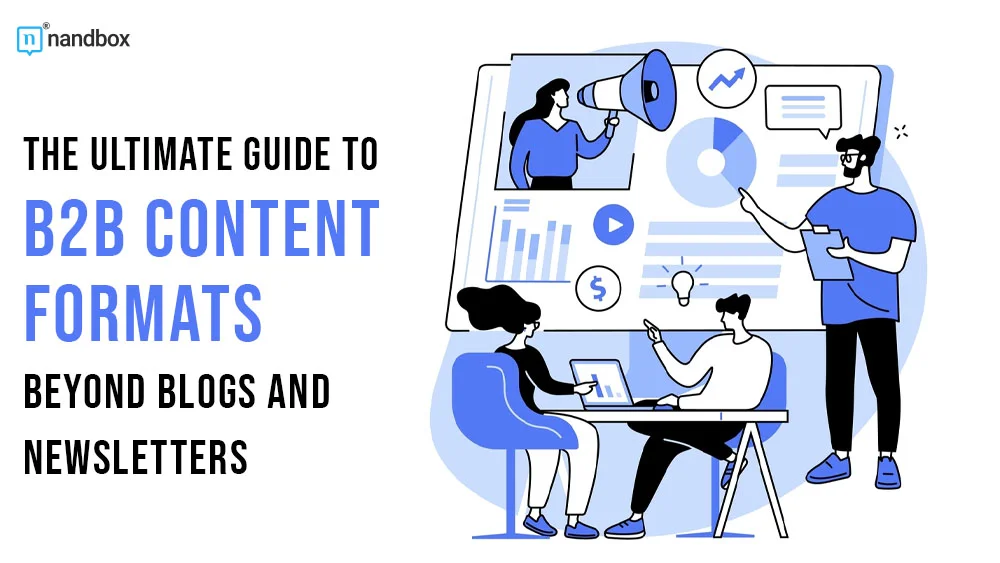In the evolving world of B2B marketing, diversifying content formats goes beyond traditional blogs and newsletters. This guide explores innovative content types that can capture the attention of a professional audience, enhance engagement, and drive meaningful interactions.
Whitepapers and E-books

Whitepapers and e-books remain staples in B2B marketing for their depth and authority. Often research-focused and data-driven, whitepapers tackle complex industry issues or market trends and are perfect for generating leads through form submissions. E-books are more comprehensive, provide a broader scope of topics, and are excellent for educating your audience and establishing thought leadership.
Video Content
Video content is rapidly becoming a favorite in B2B circles due to its versatility and high engagement rates. Types of video content include explainer videos, which are great for breaking down complex products or services; testimonial videos, which build credibility by showing real clients; and thought leadership videos, where company leaders share industry insights. Videos can be distributed through various channels, including social media platforms, YouTube, and company websites. Some companies specialize in B2B SEO services which can make your content stand out above your competitors.
Webinars and Virtual Conferences
With the rise of remote work, webinars and virtual conferences have soared in popularity. They serve as powerful platforms for real-time engagement, offering interactive elements like Q&A sessions, polls, and live chats. These formats are particularly effective for demonstrating products, sharing industry insights, and networking with professionals without geographical constraints.
Infographics
Infographics translate complex data into digestible, visual formats that are easily shareable and ideal for catching the eye of busy professionals. They can enhance the readability of data-heavy content, making them suitable for social sharing and quick consumption. Infographics can be used to summarize research findings, illustrate workflow processes, or compare products or services.
Case Studies and Success Stories
Case studies are narrative-driven pieces that detail a customer’s challenge, the applied solution, and the results achieved. They are crucial for demonstrating a product or service’s practical application and effectiveness. Similarly, success stories celebrate achievements and can often convey a more personal, relatable element of how a business’s solutions have impacted another company.
Interactive Tools and Assessments
Interactive content like tools, quizzes, or assessments engages users more deeply by providing personalized experiences or useful insights. For instance, ROI calculators, configurators, or maturity assessments can help potential clients understand the value of a product or service in a tangible, customized way.
Podcasts
Podcasts are an excellent medium for delivering content audibly, allowing your audience to engage with your content during commutes or while multitasking. They can feature interviews with industry experts, panel discussions on topical issues, or regular updates on industry trends. Podcasts are effective for building a community of engaged listeners who are interested in continuous learning.
Social Media Stories and Posts
Leveraging social media stories and posts can enhance visibility and allow for casual yet informative interactions with your audience. Also, platforms like LinkedIn, Twitter, and Instagram can host short-form content, live sessions, and updates that keep your audience informed and engaged in real time.
Conclusion
By diversifying content formats beyond traditional blogs and newsletters, B2B marketers can cater to varied preferences and needs within their audience, ensuring that their content reaches a wider audience and resonates more deeply. Whether through detailed whitepapers, engaging webinars, or innovative interactive tools, the key is to provide value in a format that best suits the information and the intended audience. This approach strengthens brand presence and drives conversion and customer loyalty in competitive B2B landscapes.



